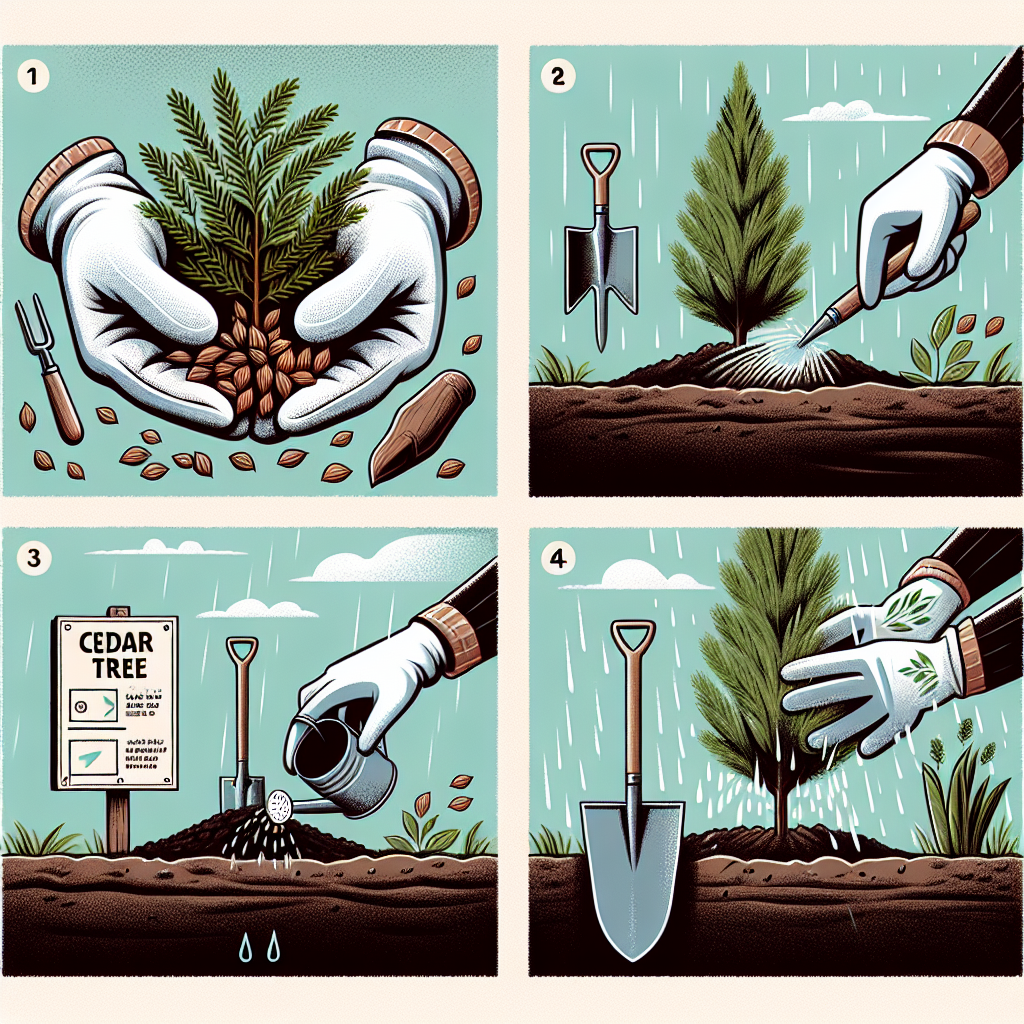
How to plant cedar trees
How to Successfully Plant Cedar Trees: A Comprehensive Guide
Cedar trees are renowned for their beauty, durability, and versatility. Whether you're looking to enhance your landscape, create a privacy screen, or enjoy the fragrant aroma, cedar trees can be an excellent choice. In this guide, we will explore how to plant cedar trees effectively, ensuring they thrive in your garden or yard. From preparation to post-planting care, we’ll cover every aspect necessary for the successful growth of these majestic trees.
Understanding Cedar Trees
Cedar trees belong to the family of coniferous trees and are known for their aromatic wood. There are several species of cedar, including the Western Red Cedar, the Eastern Red Cedar, and the Atlas Cedar. Each species has unique characteristics, growth patterns, and environmental preferences. Here’s a quick overview of some of the common types:
- Western Red Cedar: This tree is native to the Pacific Northwest and is favored for its large size, durability, and resistance to decay.
- Eastern Red Cedar: A small to medium-sized tree, this species is often used for hedges and wildlife habitats.
- Atlas Cedar: Known for its beautiful bluish foliage, this cedar is native to the Atlas Mountains in Morocco and is commonly used in ornamental landscapes.
Understanding the specific requirements and characteristics of the cedar species you're interested in will aid significantly in how to plant cedar trees and ensure their successful establishment.
Choosing the Right Location
Before planting cedar trees, selecting the appropriate site is crucial. Cedars thrive in certain environmental conditions. Here’s what you should consider:
- Sunlight: Most cedar trees prefer full sun, requiring at least 6 to 8 hours of direct sunlight daily.
- Soil Quality: Well-drained soil is vital. Cedar trees favor sandy or loamy soils that do not retain too much moisture.
- Space: Cedar trees can grow quite large, so ensure there is enough space for the tree to reach its full potential without interference from buildings or other trees.
- Climate: Understanding your local climate is essential. Cedars generally prefer regions with mild summers and cool winters.
Preparing for Planting
Once you’ve chosen the right location, it's time to prepare the site for planting. Proper preparation increases the chances of your cedar trees thriving. Here are some steps to follow:
- Clear the Area: Remove any weeds, grass, or debris from the planting site to give the cedar tree room to grow.
- Soil Amendment: Test the soil's pH and nutrients. If necessary, amend the soil with organic matter, such as compost, to enhance its fertility.
- Digging the Hole: Dig a hole that is twice as wide as the root ball and the same depth. This encourages roots to spread easily into the surrounding soil.
- Watering: Water the hole before planting to provide a moist environment for the new tree.
Selecting Cedar Trees
When purchasing cedar trees, choose healthy specimens that are suited to your growing conditions. Here are some tips for selecting the best cedar trees:
- Avoid Barren Roots: If purchasing from a nursery, avoid trees with exposed roots or any signs of damage.
- Look for Vibrant Foliage: Healthy cedar trees will have rich green or blue-green foliage depending on their species.
- Check for Pests: Inspect the tree for pests or disease symptoms to ensure you are bringing home a healthy plant.
Planting Cedar Trees
Now that you have prepared your site and selected your tree, it’s time to focus on the planting process. Following proper steps can make a significant difference in the performance of your cedar trees. Here’s how to plant cedar trees:
- Positioning: Place the cedar tree in the center of the hole. Ensure that the top of the root ball is level with the surrounding soil.
- Backfilling: Fill the hole gently with soil, ensuring there are no air pockets around the roots. Firm the soil around the base of the tree to provide stability.
- Watering: After planting, water the cedar tree thoroughly to help settle the soil.
- Mulching: Apply a layer of mulch around the base of the tree to retain moisture and suppress weeds.
Post-Planting Care
After planting, it’s essential to care for your newly planted cedar tree. Proper care ensures that the tree establishes itself and grows effectively. Here’s what you need to focus on:
- Watering: Cedar trees require consistent moisture, especially during the first year. Water weekly if there isn’t sufficient rainfall.
- Fertilizing: After a year, you can start fertilizing your cedar tree with a balanced, slow-release fertilizer.
- Pest Management: Monitor for pests such as aphids and spider mites, and treat infestations promptly to protect your tree.
- Pruning: Minimal pruning is needed unless you’re shaping the tree. Remove dead or diseased branches as necessary.
Common Challenges When Growing Cedar Trees
While cedar trees are relatively low-maintenance, several challenges can arise during their growth. Understanding these issues can help improve your success rate:
- Overwatering: Cedar trees do not thrive in overly wet conditions, which can lead to root rot.
- Pest Infestation: Keep a lookout for invasive insects that may damage the foliage or bark.
- Environmental Stress: Poor soil quality, extreme temperatures, or high winds can impact the health of your cedar tree.
Conclusion
Cedar trees bring a variety of benefits to your landscape, from aesthetic beauty to practical uses. By understanding the specifics of how to plant cedar trees, selecting the right species, and providing adequate care, you can ensure that these trees thrive in your space. With the right approach, your cedar trees will grow strong and healthy, providing enjoyment for generations to come.
“The best time to plant a tree was twenty years ago. The second best time is now.” – Chinese Proverb
Ready to get started? Equip yourself with this guide, carry out the steps, and witness the beauty of cedar trees enhance your outdoor space.
By Guest, Published on August 14th, 2024